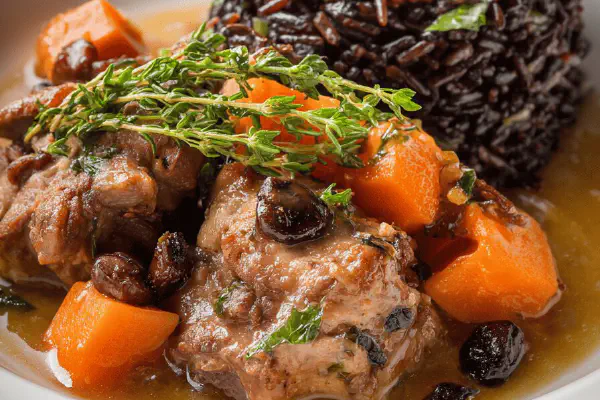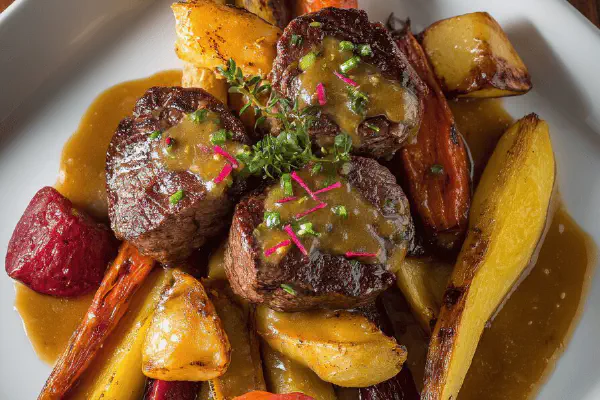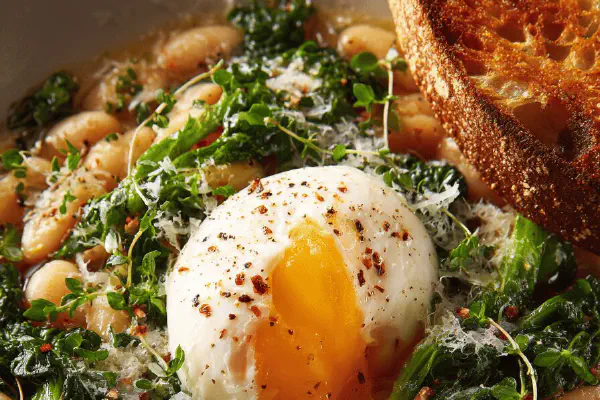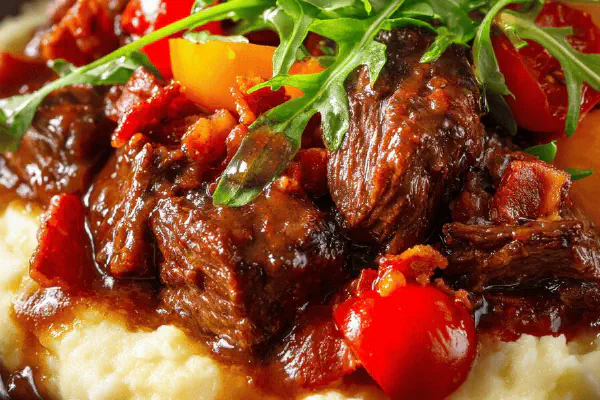Spiced Quail and Pears
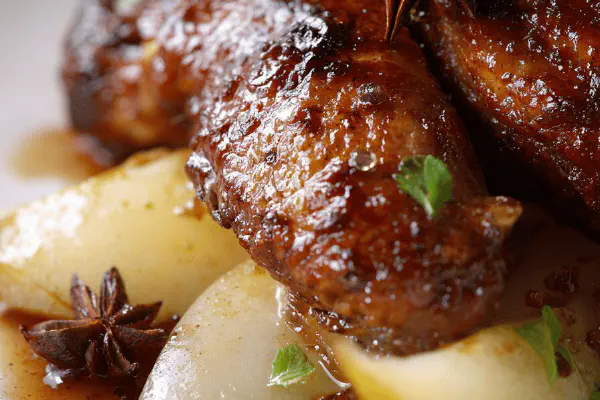
By Emma
Certified Culinary Professional
Ingredients
- 3 small but firm ripe pears peeled halved and cored
- 40 ml butter (about 2 1/2 tbsp)
- 20 ml olive oil (around 1 1/3 tbsp)
- 7 ml raw cane sugar (approx 1 1/2 tsp)
- 4 quails partially boned (see note)
- 1 medium shallot finely minced
- 3 star anise pods
- 1 small cinnamon stick
- 150 ml sweet dessert wine (muscat, ice wine, sauternes alternative)
- 300 ml dark game or veal stock
- Salt and fresh cracked pepper
About the ingredients
Method
- Heat oven to 175°C (350°F) and set rack mid-level. Line baking tray with foil.
- Melt butter with olive oil and sugar in large nonstick skillet on medium-high. Add pears flat side down. Brown about 3 mins each side. Remove to tray skin side down.
- In same skillet add quail skin side down, add oil if dry. Brown 3 mins. Salt and pepper. Flip and cook one more min.
- Place each quail atop a pear half quail skin side up. Roast 20-25 mins until quail cooked through, juices run clear.
- While quails cook, soften shallot in skillet, add star anise and cinnamon stick, salt and pepper.
- Deglaze with dessert wine, reduce by three-quarters. Add stock, reduce by half to a glaze thickness. Optionally whisk in a knob of butter. Adjust seasoning to taste.
- Serve quail on pear halves, spoon warm spiced sauce over top.
Cooking tips
Chef's notes
- 💡 Brown pears skin side down longer than 3 mins. Caramelize well first. Use firm pears only to avoid mush. Butter must melt with olive oil and raw cane sugar stirred till bubbles appear. Keep heat medium-high but watch carefully. Pans differ. If skillet dry add more oil, quail skin crisps best with enough fat layer beneath.
- 💡 Quails partially boned help eatability, cut down oven time if whole. Skin side down on stove to crisp fully but avoid burning. Flip just 1 additional minute. Work quickly moving birds to pears on foil-lined tray. Pears hold shape after butter bath but stay firm if not overbaked. Oven temp at 175 Celsius slows roasting to keep juiciness inside bird and pears intact.
- 💡 Shallot finely minced not chopped coarse. Softens easily, avoids sharp bites in sauce. Star anise pods should be 3 minimum to amp spice aroma. Cinnamon stick small to keep warm spice balance without overpowering. Deglazing with dessert wine done slowly, reduce lot before adding stock. Volume of wine key here, rich sugar concentrates.
- 💡 Reduce stock and wine down till sauce thick enough to coat back of spoon or bird skin. Stir occasionally. Can whisk knob of butter end for shine and to round edges but optional. Salt and pepper season in stages. Taste as you go. Sauce usually gains flavor depth during reduction. Using same pan after browning keeps layers of flavor intact, no washing.
- 💡 Rest quails briefly after roasting out of oven to retain juices. Oven rack middle level helps even heat circulation for pears and birds. Pear halves provide stable base but handle delicately. Serve immediately with warm sauce. Keeping quail skin crisp depends on quick transfer and plating. Sauce warmed but not boiling keeps spices vivid. Timing flexible. Watch birds closely; size varies.
Common questions
How to keep quail skin crispy?
Sear skin side down longer on stove first. Avoid overcrowding pan. Use enough fat under bird. Oven temp moderate, prevents steam buildup. Rest bird briefly off heat after roasting. Handle gently when plating. Crispy retention depends on fast plating and warm sauce not poured too hot.
Can whole quails be used instead of partially boned?
Yes but adjust cooking time. Whole quail takes longer to roast through evenly. You might need 5 to 10 more minutes depending on size. Bone-in slows heat penetration. Keep checking juices run clear. Skin still needs crisp searing first to avoid rubbery texture later.
What if pears become too soft during roasting?
Use firmer pears. Peeling critical to prevent dry texture outside. Also don’t overcook on stove before baking. Three minutes each side max browning. Oven temp lowered from original to slow roast. Pears soften but should not collapse totally or turn mushy. Timing and fruit choice crucial.
How to store leftovers?
Cool quickly, separate quail from pears if possible. Both can refrigerate up to 2 days wrapped tight. Reheat gently, avoid microwave if you want to keep pear texture and skin crispiness. Sauce kept separately to warm on stove low. Freezing quail with soft pears not recommended; texture will degrade.
